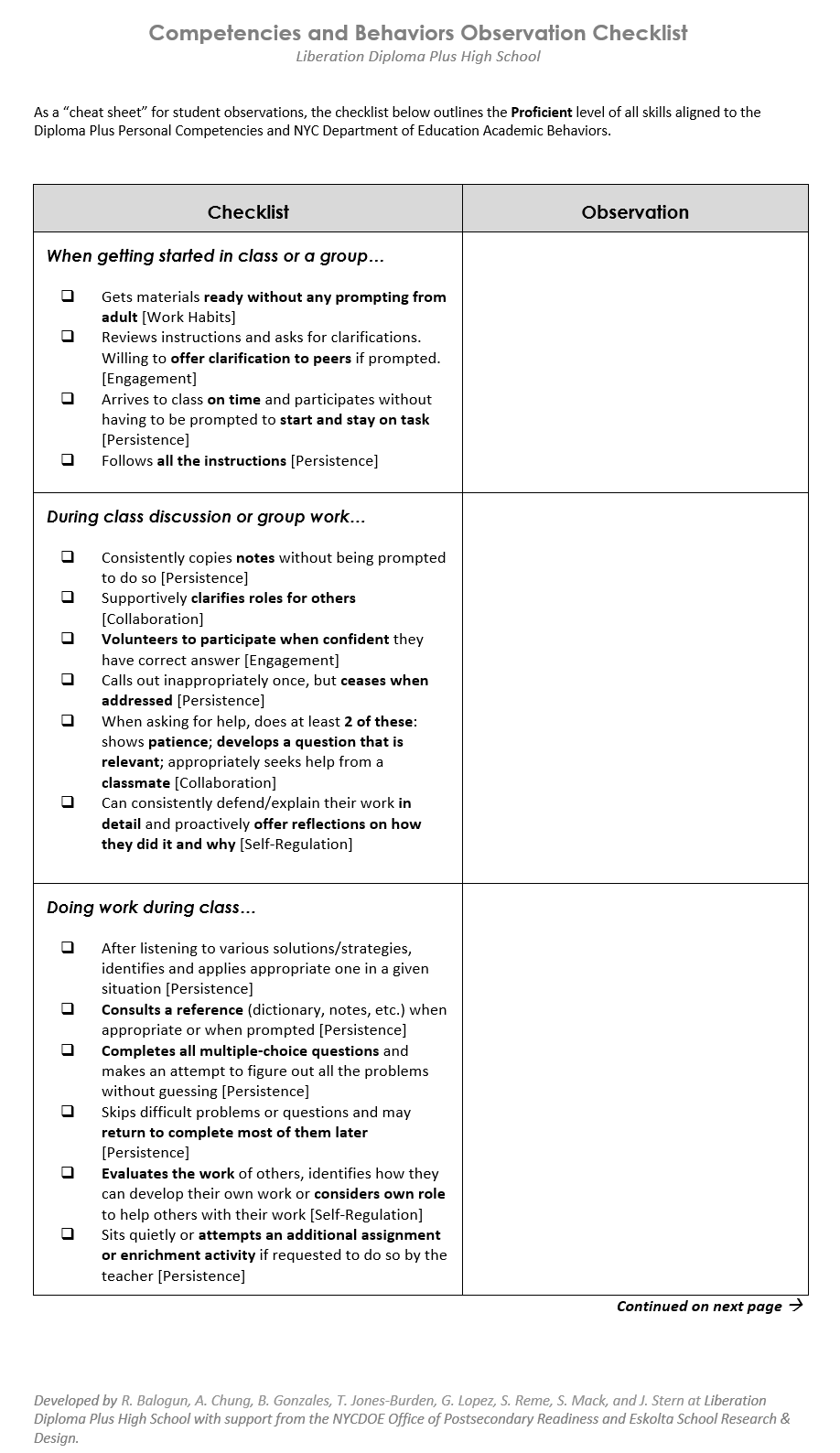What We Do: Design Projects >> Strength-Based Culture
Building Persistence: Academic and Personal Behaviors at Liberation Diploma Plus
Conventional high school curricula have nearly always focused on content knowledge and academic proficiency, but a growing body of research highlights specific noncognitive factors—such as academic perseverance and social skills—as pivotal to student learning and success inside the classroom and out.1 Developing these characteristics is especially important for students who have struggled in traditional academic settings in the past. Liberation Diploma Plus High School, a transfer school serving overage and under-credited students in Coney Island, is attempting to strengthen these traits in their students by focusing on the role of academic behaviors in student success. This work is a part of the Transfer School Common Core Institute coordinated by NYCDOE Office of Postsecondary Readiness in conjunction with Eskolta and reDesign.
In the spring of 2014, an interdisciplinary inquiry team of teachers and counselors at Liberation created a comprehensive list of essential skills derived from key academic and personal behaviors, such as persistence, engagement, and self-regulation, alongside eight “personal competencies” identified by the Diploma Plus organization. Throughout the 2014–15 school year, the team has worked with Eskolta’s executive director Michael Rothman and research and design facilitator Kendra Brewster to develop a behavior rubric and checklist to evaluate student proficiency in the key skills. Through observation and reevaluation, the group has honed these tools and has begun to test strategies for students to become more proficient in academic and personal behaviors and skills. In particular, the teachers have tested strategies to improve persistence in their students, one of the NYCDOE’s academic behaviors that encompasses three of the Diploma Plus competencies.
Bruce Gonzales, the assistant principal at Liberation, says that the work has enabled staff to share insight on individual students to better understand students’ needs. Initially, Gonzales says, the team confronted the problem of what to do when a specific strategy works for one student but not another. But the collaborative process has allowed staff to compare notes on what works for particular students, which has increased their repertoire of strategies to suggest. Staff also exchange ways to use the tools “to drive the academic behaviors” in their classes. Gonzales notes that during inquiry meetings, teachers are able to start by “sharing strategies and anecdotes. They apply select strategies in their interactions with students to see if they are effective.” The result of these interactions are shared with the inquiry team at the next meeting, during which all team members are invited to ask questions and make suggestions. The team then continues the process of action research until the most effective strategies are identified and recorded. Ultimately, the goal is to disseminate the rubric and strategies to the entire Liberation staff and begin implementing the tools in every classroom.
_________________
1Farrington, C.A., Roderick, M., Allensworth, E., Nagaoka, J., Keyes, T.S., Johnson, D.W., &Beechum, N.O. (2012).
Teaching adolescents to become learners. The role of noncognitive factors in shaping school performance: A critical literature review. Chicago: University of Chicago Consortium on Chicago School Research.

